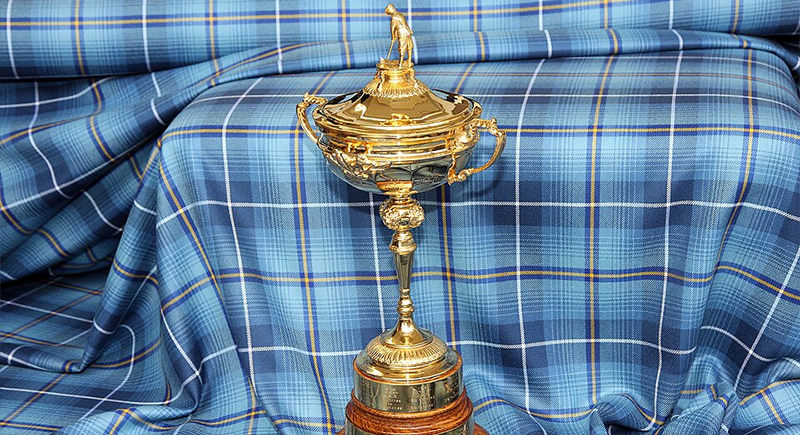History of Ryder Cup Players Being Paid & Why This Year Is Different—same as ref source
The Ryder Cup has always been defined by national pride and the rivalry between the United States and Europe. The atmosphere in the stands is loud and charged, unlike anything you’d imagine regarding golf. For most of its history, that sense of competition was enough. Players competed without pay, motivated by the chance to represent their side. However, as the event grew into a global spectacle with massive TV deals and sponsorships, debate emerged over player compensation and how the profits were used. That debate lasted for decades, and in 2025, the tournament has finally taken on a new shape.
What makes this year stand out is that Team USA golfers are collecting actual salaries for the first time. The shift raises plenty of questions about tradition, fairness, and how much money really matters when you already live in a tax bracket reserved for sports icons. Before getting into the new system, it helps to know how the payment issue crept into the Ryder Cup in the first place.
Where the Debate Began

Image via Wikimedia Commons/Lirazelf
The Ryder Cup started in 1927 as a friendly match between the United States and Great Britain. For decades, the idea of payment never arose because the event was viewed as an honor, not a job. By the 1980s, however, television money and sponsorships turned the once modest exhibition into a major cash machine. Still, the players weren’t seeing any of it, which led to frustration.
Things came to a head in 1999. Tiger Woods, Mark O’Meara, and David Duval openly questioned why the PGA of America was making millions while players left empty-handed. After heated discussions, the PGA compromised by setting aside $200,000 in the name of each U.S. golfer, but the money had to go to charity.
The charitable donation became a staple of the Ryder Cup, even as paychecks for regular Tour events skyrocketed in the years that followed. Europe, meanwhile, stayed committed to the idea that their players should never be paid to represent the continent, with all proceeds feeding back into the European Tour.
Controversy Keeps The Issue Alive
For a while, the arrangement worked. American players supported causes close to them, and the public mostly forgot about the earlier pay dispute. That was until it resurfaced in 2023 during the Ryder Cup in Rome, when Patrick Cantlay skipped wearing his team hat. Reports suggested it was a silent protest over the lack of direct pay, which sparked a storm of headlines and thousands of European fans waving their caps at him on the 18th green. Cantlay denied the story, saying the hat didn’t fit, but the perception of a split within Team USA lingered.
That same year, there was talk about a new push for payments. Behind the scenes, players and their representatives pressed the PGA of America to modernize its approach. Xander Schauffele’s camp was among those most vocal about negotiating a fairer system, and according to reports, the talks nearly turned ugly when participation agreements came into question. By the end of 2023, the PGA of America gave in and voted for a new structure to start in 2025.
What Changed In 2025

Image via Wikimedia Commons/Berlination
At Bethpage Black, Team USA players are each receiving $500,000 for the first time in Ryder Cup history. Of that, $300,000 is earmarked for charity. The remaining $200,000 goes directly to the players as a stipend. It mirrors the Presidents Cup system, where U.S. players also receive stipends alongside their charitable contributions.
This might sound like a significant change, but many American golfers have already said they’ll donate the stipend as well. Scottie Scheffler pointed out that he and his wife planned to support programs in their Dallas community. Cantlay mentioned youth foundations in Southern California. Schauffele echoed the same, noting he’d feel better using the money to help local organizations than pocketing it himself. Captain Keegan Bradley has also pledged to give his full amount to charity.
Different Views Across The Atlantic
Team Europe has stood firmly against personal payouts. Captain Luke Donald said he asked his players about the idea during meetings in Rome last year, and everyone rejected it. He emphasized that the Ryder Cup is about purpose and shared memories, not paychecks. Donald even quipped that with ticket prices soaring above $700, U.S. fans could turn hostile if their paid players fail to perform.
The stance fits Europe’s tradition of channeling profits into its tour, which historically relied heavily on Ryder Cup revenue to survive. Rory McIlroy once said he would happily pay for the privilege of playing in the Ryder Cup. Such sentiment is still central to the European identity.
Why It Feels Different
Critics like Tom Watson and Darren Clarke argue that money undermines the honor of playing for your country. At the same time, U.S. supporters counter that the Ryder Cup is now a massive business and players deserve a share. The idea of being paid at all sits uncomfortably with golf fans who grew up with the Ryder Cup as a pure badge of honor.
Still, the Ryder Cup has continually evolved with the times. The event went from a sleepy exhibition to one of the sport’s most-watched spectacles. Now it has entered a new chapter, but one thing hasn’t changed: the pressure is still on the players to deliver, because even a paycheck can’t buy victory at the Ryder Cup.